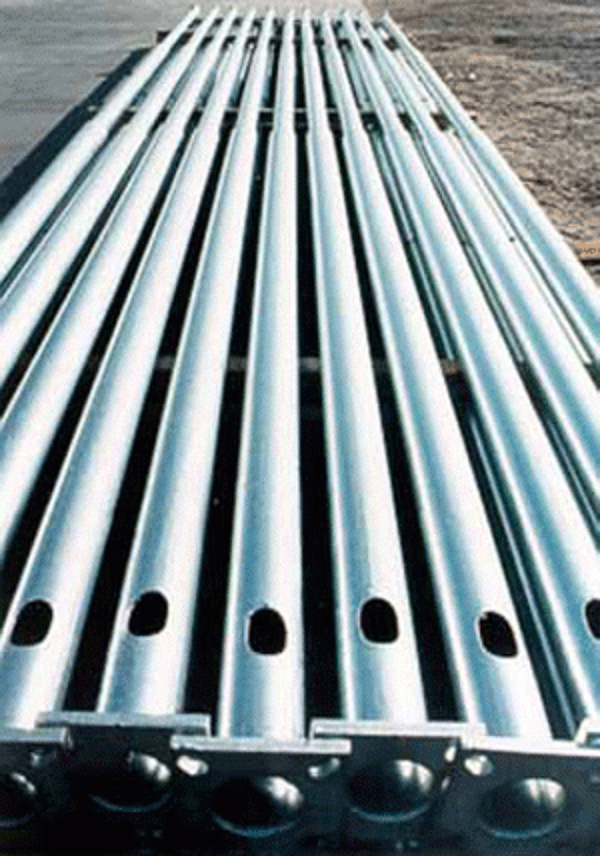Specifying Galvanized Structural Pipe and Tube
Which is the correct material category in ASTM A123/A123M to specify pipe or tubing used for structural purposes?
This is a common question among specifiers, and the confusion is understandable considering it seems like pipe can fall into two categories in ASTM A123/A123M Structural Shapes and Plate or Pipe and Tubing. This distinction is important because some steel thickness ranges for the two categories call for different coating thickness minimums. See the bolded line in Table 1 from ASTM A123/A123M.
| ASTM A123 Table 1: Minimum Average Coating Thickness Grade by Material Category | ||||||
|---|---|---|---|---|---|---|
| All Specimens Tested, Steel Thickness Range (Measured) in. [mm] | ||||||
| Material Category | <1/16 [<1.6] | >1/16 to <1/8 [>1.6 to <3.2] | >1/8 to 3/16 [>3.2 to < 4.8] | >3/16 to <1/4 [>4.8 to <6.4] | >1/4 to <5/8 [>6.4 to <16.0] | >5/8 [>16.0] |
| Structural Shapes | 45 | 65 | 75 | 75 | 100 | 100 |
| Strip and Bar | 45 | 65 | 75 | 75 | 75 | 100 |
| Plate | 45 | 65 | 75 | 75 | 75 | 100 |
| Pipe & Tubing | 45 | 45 | 75 | 75 | 75 | 75 |
| Wire | 35 | 50 | 60 | 65 | 80 | 80 |
| Reinforcing Bar | -- | -- | -- | -- | 100 | 100 |
| Forgings and Castings | -- | -- | -- | 100 | 100 | 100 |
The correct material category to specify pipe or tubing used for structural purposes is the Pipe and Tubing category because although it serves a structural role, it is still a pipe or tube product.

Coating thickness minimums in ASTM galvanizing specifications are not randomly selected; rather, they come from experience of galvanizing many different steel members and observing the common coating thicknesses achieved on those members. Different material categories in ASTM A123/ A123M often have different steel chemistry when compared to other material categories.
One such difference is pipe and tubing is often aluminum killed rather than silicon-killed, so there is much less or nearly no silicon in pipe and tubing. Because silicon is one of the catalysts for the galvanizing reaction, pipe and tubing often develops a thinner hot-dip galvanized coating because there is less available to catalyze the metallurgical reaction in the galvanizing process.
© 2025 American Galvanizers Association. The material provided herein has been developed to provide accurate and authoritative information about after-fabrication hot-dip galvanized steel. This material provides general information only and is not intended as a substitute for competent professional examination and verification as to suitability and applicability. The information provided herein is not intended as a representation or warranty on the part of the AGA. Anyone making use of this information assumes all liability arising from such use.

